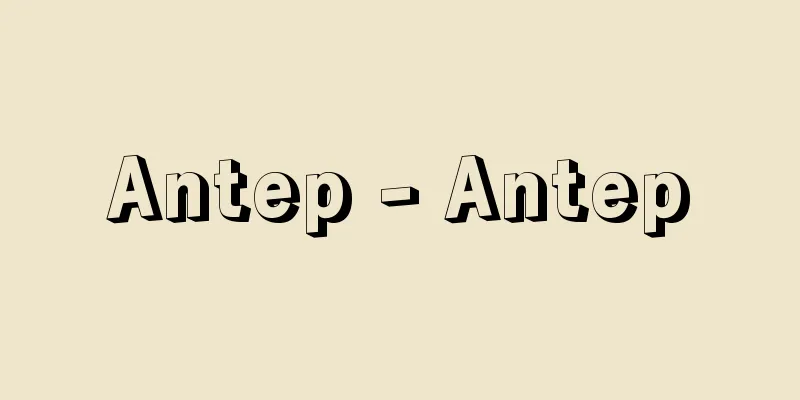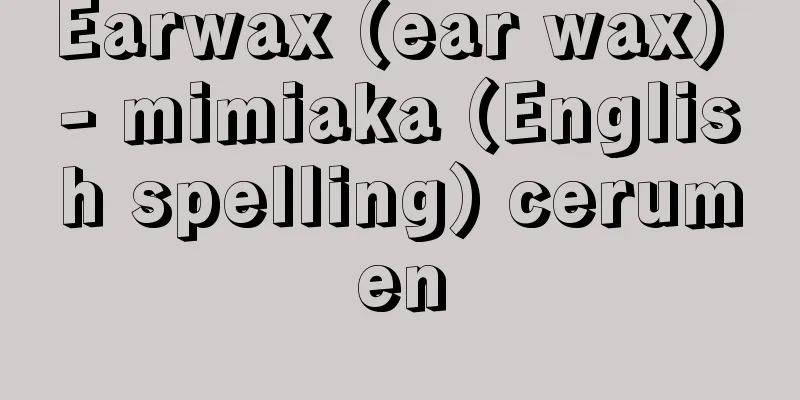River planning

|
A plan formulated to improve rivers. It comprehensively considers river flood control, water use, and the environment, envisions what the river should look like in the future, and summarizes how rivers should be improved as a basic policy for river improvement. It then formulates a river improvement plan that outlines the specific details of the improvement work to be carried out over a period of about 30 years in line with the basic policy. River improvement plans consist of flood control plans (flood control plans), water use plans (low water plans), and river environment conservation plans. Flood control plans are formulated to prevent floods from overflowing. First, the rainfall covered by the plan (designed rainfall) is decided, and the hydrographic flow rate (basic high water) at the river's design reference point when the designed rainfall falls in the river basin is calculated by runoff analysis. Next, methods for dealing with the basic high water are considered. Flood control methods include river improvement such as widening and leveeing the river channel, building embankments and raising the height, dredging and excavating the riverbed, creating cutoff channels, and straightening the river channel to increase the flow capacity of the river channel (river improvement), excavating spillway channels to divert floodwaters and reduce the burden on the river channel (spillway excavation), and building dams and regulating basins (ponds) to store part of the floodwaters and reduce the flood flow in the river channel (flood control). If the peak flow of the basic high water (designated high water flow) can be discharged by river improvement alone, a river channel plan is made for the designed high water flow, and a flood control plan is formulated. If it is difficult to discharge the designed high water flow by river improvement alone, flood treatment methods that combine river improvement, drainage channel excavation, flood control, etc. are considered, and the allocation of the designed high water flow to the river channel, drainage channel, dam, regulation area, etc. is decided from technical, economic, and environmental conservation standpoints. For the allocated designed high water flow, a river channel plan, drainage channel plan, dam plan, regulation area plan, etc. are made, and a flood control plan is formulated. Water utilization plans are formulated to utilize river water for domestic, industrial, and agricultural uses. Future demand and maintenance flow rates for domestic, industrial, and agricultural uses are estimated, and the relationship between water supply and demand is examined using the flow conditions in a drought base year (for example, the driest year in a 10-year period) as a base drought. If demand exceeds supply during a drought, plans are made for dams, estuary barrages, and lake development to develop the shortfall (water resources development plans), and water utilization plans are formulated to ensure a stable supply of river water throughout the year to meet demand. River environment conservation plans are formulated to conserve and improve river environments. River environment conservation plans include river environment conservation and improvement plans and water quality conservation plans. River environment conservation and improvement plans are formulated to adjust the various demands regarding river space and to conserve the natural environment of rivers and utilize the riverbed. Water quality conservation plans are formulated to conserve and improve water quality by planning measures such as dredging riverbed sludge, directing purified water, installing purification facilities, developing sewerage systems, and regulating industrial wastewater, so that water pollution does not cause damage to the living environment or river ecosystem. [Noboru Ikawa] Source: Shogakukan Encyclopedia Nipponica About Encyclopedia Nipponica Information | Legend |
|
河川を整備するために策定される計画。河川の治水、利水、環境を総合的にとらえ、河川の将来のあるべき姿を想定し、河川整備のあり方を河川整備基本方針としてまとめ、基本方針に沿って30年程度の期間で実施すべき整備の具体的な内容を河川整備計画として策定する。河川整備計画は洪水防御計画(治水計画)、利水計画(低水計画)、河川環境保全計画などで構成される。 洪水防御計画は洪水の氾濫(はんらん)を防止するために策定する。まず、計画の対象とする降雨(計画降雨)を決め、計画降雨が流域に降った場合の河川の計画基準点における流量ハイドログフ(基本高水(きほんたかみず))を流出解析により算出する。次に、基本高水を処理する方法について検討する。洪水を処理する方法には、河道の拡幅・引堤、築堤・嵩上(かさあ)げ、河床浚渫(しゅんせつ)・掘削、捷水路(しょうすいろ)の開削、河道の直線化などの河川改修により河道の流下能力を増大させる方法(河川改修)、放水路を開削して洪水を分流し河道の負担を減らす方法(放水路開削)、ダムや調節地(池)(遊水地(池))をつくって洪水の一部を貯留して河道の洪水流量を減少させる方法(洪水調節)などがある。基本高水のピーク流量(計画高水(こうすい)流量)を河川改修だけで流下させることができる場合は計画高水流量に対して河道計画をたて、洪水防御計画を策定する。計画高水流量を河川改修だけで流下させることが困難な場合は河川改修と放水路開削、洪水調節などを組み合わせた洪水処理方法を考え、技術的、経済的および環境保全の見地から検討して計画高水流量の河道、放水路、ダム、調節地などへの配分を決める。配分された計画高水流量に対して河道計画、放水路計画、ダム計画、調節地計画などをたて、洪水防御計画を策定する。 利水計画は河川水を生活用水、工業用水、農業用水などに利用するために策定する。将来の生活用水、工業用水、農業用水などの需要量および維持流量を推定し、渇水基準年(たとえば、10年間の第1位の渇水年)の流況を基準渇水として水の需給関係を検討する。渇水時に需要量が供給量を上回る場合には不足分の水量を開発するためにダム、河口堰や湖沼開発などの計画(水資源開発計画)をたて、河川水に対する需要量を年間を通じて安定して供給できるように利水計画を策定する。 河川環境保全計画は河川環境を保全、整備するために策定する。河川環境保全計画には河川環境保全整備計画と水質保全計画がある。河川環境保全整備計画は河川空間に対する多様な要望を調整し、河川の自然環境の保全、河川敷の利用を図るように策定する。水質保全計画は水質の汚濁により生活環境や河川の生態系に障害が生じないように、河床汚泥(おでい)の浚渫、浄化用水の導水、浄化施設の設置、下水道整備、工場排水規制などの対策を計画し、水質の保全、改善を図るように策定する。 [鮏川 登] 出典 小学館 日本大百科全書(ニッポニカ)日本大百科全書(ニッポニカ)について 情報 | 凡例 |
Recommend
Liquid nitriding
...This nitrided layer is very hard, with a Vicke...
Registration record - Toukaki (English spelling)
A record of those who passed the Chinese imperial ...
Ginkgoites (English spelling)
A fossil genus belonging to the gymnosperm family ...
Gokase River
This river originates in the Kyushu Mountains in ...
Attic comedy
…He was one of the three great Greek writers of A...
cutch
…All species are widely distributed along the tro...
Mr. Oizumi - Ooizumi maggot
...A descendant of Muto Yorihira, a bureaucrat fr...
Holocene - Holocene
A division of geological time. The latest epoch f...
Overflowing - Abremono
1. A person who has lost his job. A ronin. 2. A sc...
Walt Disney Productions
…The official name is Walt Disney World. It is ru...
Scyphozoa (Scyphozoa)
A class of Coelenterata (Cnidaria). Also called Sc...
Takatora Todo
Year of death: 5th October 1630 (9th November 1630...
summer snowflake
...The leaves are similar to those of daffodils, ...
Mechanical transplant
...When transplanting large, old trees, do not do...
Fence - Hei
A continuous wall built on the boundary of a prop...









